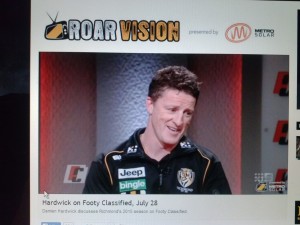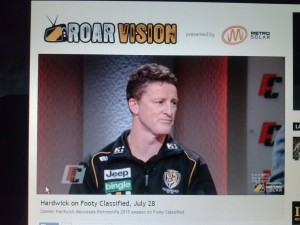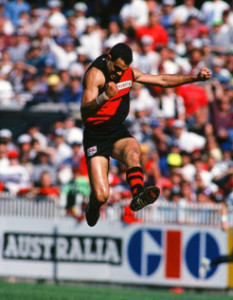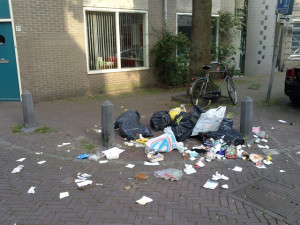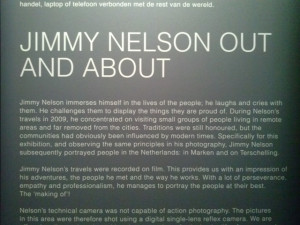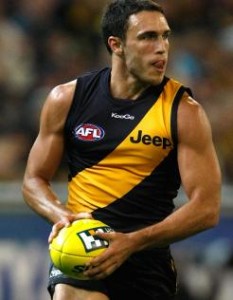Caroline Wilson asked Damien Hardwick, on Tuesday’s Footy Classified: “what do you say to Adam Goodes tonight?” He responded in his typical manner: trying to take the heat out of the issue and focus on the people who are involved at the most critical point of the matter. He uttered one sentence that, perhaps unfairly condemned some members of ‘the footy community’. Footy coaches have the unenviable task of having to pretend that footy is the most important thing in the world, while also emphasising that it is just a game. It is a kind of work that is all-consuming; footy these days, devoid of the play that it derived from. Footy coaches, too, are asked questions in many matters beyond footy.
Dimma: “I was thinking about this [Wilson’s question] on the way in. It is an incredibly sad set of circumstances. I played against him for a long period of time. Now I’ve coached against him for a period of time. As a player – I still worry about him as a coach. … Unfortunately there are some moronic people, within society, within footy crowds. It is an incredibly bad look. Whether it is bullying, racism, I don’t know. It is just incredibly disappointing that Australian football people do this. We’re a family. I don’t understand why we don’t treat each other as family. The fact of the matter is, if my Richmond supporters are booing Adam Goodes, they’re booing Shane Edwards, they’re booing Nathan Drummond, they’re booing every single Indigenous player in the competition. And it is not on.”
Dimma remembers the good days
Dimma’s expression changed from cheerful at the beginning of his answer, to grim by the conclusion. Cheerful, while thinking of the qualities of Goodes as a footballer, grim while condemning the attitude to Goodes coming from the crowd.
Adam Goodes, 365 games, two Brownlows, two Premiership medals, Australian of the Year. To think of Goodes as only a footballer is to deny his identity and to deny his ongoing work to attain the appropriate place for Aboriginal Australia in the Australian nation. He doesn’t deserve indifference, let alone racist bullying; he deserves respect and love. He should be a figure of pride for the whole footy community, instead he has been – hopefully only for the very short term – pushed out of the game he has given so much to.
The position of the Richmond Football Club in this issue is clear. In terms of its current players, the Club has highlighted the story of Shane Edwards and his process of exploring his family’s story. The Club has played a committed role in the Dreamtime at the G game. Perhaps most importantly, though, the RFC is home to the Korin Gamadji Institute, which offers training for Indigenous youth to develop life-skills, such as ‘leadership, health and well-being and cultural pride and affirmation’. The KGI has been endorsed and highly recommended by Reconciliation Australia. The team on Friday, will again don the Dreamtime jumper: a proud moment to indicate solidarity with Goodes and the values he stands for.
Come on you Tigers.
Suitably stern
